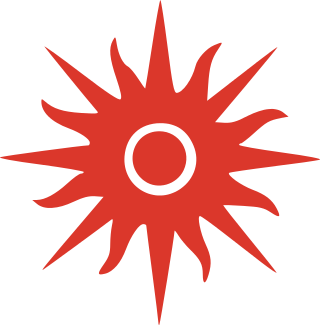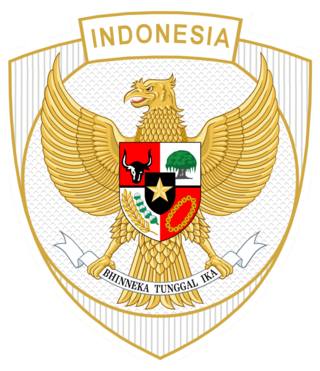| Gymnastics at the 1998 Asian Games | |
|---|---|
 | |
| Venue | Land Sports Complex |
| Dates | 8–13 December 1998 |
Gymnastics was contested at the 1998 Asian Games in IMPACT Hall, Bangkok, Thailand.
| Gymnastics at the 1998 Asian Games | |
|---|---|
 | |
| Venue | Land Sports Complex |
| Dates | 8–13 December 1998 |
Gymnastics was contested at the 1998 Asian Games in IMPACT Hall, Bangkok, Thailand.
| Event | Gold | Silver | Bronze |
|---|---|---|---|
| Team | Huang Xu Li Xiaopeng Xing Aowei Yang Wei Zhang Jinjing Zhao Sheng | Cho Seong-min Kim Dong-hwa Lee Jang-hyung Lee Joo-hyung Yeo Hong-chul You Won-kil | Mutsumi Harada Akihiro Kasamatsu Yasuhiro Ogawa Yoshihiro Saito Naoya Tsukahara Isao Yoneda |
| Individual all-around | Huang Xu | Yang Wei | Naoya Tsukahara |
| Floor | Yang Wei | Kim Dong-hwa | Li Xiaopeng |
| Pommel horse | Xing Aowei | Shared gold | Huang Xu |
| Pae Gil-su | Chiang Chien-tung | ||
| Rings | Amornthep Waewsang | Huang Xu | Chen Kuang-hui |
| Yoshihiro Saito | |||
| Vault | Yeo Hong-chul | Li Xiaopeng | Naoya Tsukahara |
| Parallel bars | Li Xiaopeng | Zhang Jinjing | Shared silver |
| Alexey Dmitriyenko | |||
| Kim Chang-gyu | |||
| Jong U-chol | |||
| Horizontal bar | Zhang Jinjing | Yoshihiro Saito | Xing Aowei |
| Lee Joo-hyung |
| Event | Gold | Silver | Bronze |
|---|---|---|---|
| Team | Dong Weihua Pu Yunfei Wang Weixiao Zhou Xiaojing | Mikako Iwamoto Rieko Matsunaga Yukari Murata | Cho Eun-jung Choi Ye-lim Kim Eun-hae Kim Min-jung |
| Individual all-around | Zhou Xiaojing | Yun Myong-ran | Wang Weixiao |
| Rank | Nation | Gold | Silver | Bronze | Total |
|---|---|---|---|---|---|
| 1 | 14 | 6 | 5 | 25 | |
| 2 | 1 | 4 | 0 | 5 | |
| 3 | 1 | 2 | 2 | 5 | |
| 4 | 1 | 0 | 0 | 1 | |
| 5 | 0 | 3 | 7 | 10 | |
| 6 | 0 | 2 | 4 | 6 | |
| 7 | 0 | 1 | 0 | 1 | |
| 8 | 0 | 0 | 2 | 2 | |
| Totals (8 entries) | 17 | 18 | 20 | 55 | |

Asia is the largest continent in the world by both land area and population. It covers an area of more than 44 million square kilometres, about 30% of Earth's total land area and 8% of Earth's total surface area. The continent, which has long been home to the majority of the human population, was the site of many of the first civilisations. Its 4.7 billion people constitute roughly 60% of the world's population.

Central Asia is a region of Asia bounded by the Caspian Sea to the southwest, European Russia to the northwest, China and Mongolia to the east, Afghanistan and Iran to the south, and Siberia to the north. It includes Kazakhstan, Kyrgyzstan, Tajikistan, Turkmenistan, and Uzbekistan. The countries as a group are also colloquially referred to as the "-stans" as all have names ending with the Persian suffix "-stan" in both respective native languages and most other languages.

India, officially the Republic of India, is a country in South Asia. It is the most populous country in the world and the seventh-largest by area. Bounded by the Indian Ocean on the south, the Arabian Sea on the southwest, and the Bay of Bengal on the southeast, it shares land borders with Pakistan to the west; China, Nepal, and Bhutan to the north; and Bangladesh and Myanmar to the east. In the Indian Ocean, India is in the vicinity of Sri Lanka and the Maldives; its Andaman and Nicobar Islands share a maritime border with Thailand, Myanmar, and Indonesia.

Indonesia, officially the Republic of Indonesia, is a country in Southeast Asia and Oceania, between the Indian and Pacific oceans. It consists of over 17,000 islands, including Sumatra, Java, Sulawesi, and parts of Borneo and New Guinea. Indonesia is the world's largest archipelagic state and the 14th-largest country by area, at 1,904,569 square kilometres. With over 280 million people, Indonesia is the world's fourth-most-populous country and the most populous Muslim-majority country. Java, the world's most populous island, is home to more than half of the country's population.

The Philippines, officially the Republic of the Philippines, is an archipelagic country in Southeast Asia. In the western Pacific Ocean, it consists of 7,641 islands, with a total area of roughly 300,000 square kilometers, which are broadly categorized in three main geographical divisions from north to south: Luzon, Visayas, and Mindanao.

Southeast Asia is the geographical southeastern region of Asia, consisting of the regions that are situated south of China, east of the Indian subcontinent, and northwest of the Australian mainland, which is part of Oceania. Southeast Asia is bordered to the north by East Asia, to the west by South Asia and the Bay of Bengal, to the east by Oceania and the Pacific Ocean, and to the south by Australia and the Indian Ocean. Apart from the British Indian Ocean Territory and two out of 26 atolls of the Maldives in South Asia, Maritime Southeast Asia is the only other subregion of Asia that lies partly within the Southern Hemisphere. Mainland Southeast Asia is entirely in the Northern Hemisphere. East Timor and the southern portion of Indonesia are the parts of Southeast Asia that lie south of the equator.

Thailand, officially the Kingdom of Thailand and historically known as Siam, is a country in Southeast Asia on the Indochinese Peninsula. With a population of almost 66 million, it spans 513,115 square kilometres (198,115 sq mi).

The Asian Games, also known as Asiad, is a continental multi-sport event held every four years for athletes of Asia. The Games were regulated by Asian Games Federation from the first Games in New Delhi, India in 1951, until the 1978 Games. Since the 1982 Games, they have been organized by the Olympic Council of Asia, after the breakup of the Asian Games Federation. The Games are recognized by the International Olympic Committee and are the second largest multi-sport event after the Olympic Games.

Kuala Lumpur International Airport (KLIA) is the main international airport serving Kuala Lumpur, the capital of Malaysia. It is located in the Sepang District of Selangor, approximately 45 km (28 mi) south of downtown Kuala Lumpur and serves the city's greater conurbation.

The Association of Southeast Asian Nations, commonly abbreviated as ASEAN, is a political and economic union of 10 states in Southeast Asia. Together, its member states represent a population of more than 600 million people and land area of over 4.5 million km2 (1.7 million sq mi). The bloc generated a purchasing power parity (PPP) gross domestic product (GDP) of around US$10.2 trillion in 2022, constituting approximately 6.5% of global GDP (PPP). ASEAN member states include some of the fastest growing economies in the world, and the institution plays an integral role in East Asian regionalism.

Asian Americans are Americans with ancestry from the continent of Asia.

The AFC Asian Cup is the primary association football competition contested by the senior men's national teams of the members of the Asian Football Confederation (AFC), determining the continental champion of Asia. It is the second-oldest continental football championship in the world after Copa América. The winning team becomes the champions of Asia and until 2015 qualified for the FIFA Confederations Cup.

West Asia is the westernmost region of Asia. As defined by most academics, UN bodies and other institutions, the subregion consists of Anatolia, the Arabian Peninsula, Iran, Mesopotamia, the Armenian highlands, the Levant, the island of Cyprus, the Sinai Peninsula and the South Caucasus. The region is separated from Africa by the Isthmus of Suez in Egypt, and separated from Europe by the waterways of the Turkish Straits and the watershed of the Greater Caucasus. Central Asia lies to its northeast, while South Asia lies to its east. Twelve seas surround the region (clockwise): the Aegean Sea, the Sea of Marmara, the Black Sea, the Caspian Sea, the Persian Gulf, the Gulf of Oman, the Arabian Sea, the Gulf of Aden, the Red Sea, the Gulf of Aqaba, the Gulf of Suez, and the Mediterranean Sea. West Asia contains the majority of the similarly defined Middle East. The Middle East is a political term that has changed many times depending on political and historical context while West Asia is a geographical term with more consistency. It excludes most of Egypt and the northwestern part of Turkey, and includes the southern part of the Caucasus.

The Indonesia national football team represents Indonesia in international men's football matches since 1945. The men's national team is controlled by the Football Association of Indonesia (PSSI), the governing body for football in Indonesia, which is a part of AFC, under the jurisdiction of FIFA. Most of Indonesia home matches are played at the Gelora Bung Karno Stadium.

The Asia–Pacific (APAC) is the region of the world adjoining the western Pacific Ocean. The region's precise boundaries vary depending on context, but countries and territories in Australasia, East Asia, and Southeast Asia are often included. In a wider context, Central Asia, North Asia, the Pacific Islands, South Asia, West Asia, and even Pacific-adjoining countries in the Americas can be included. For example, the Asia-Pacific Economic Cooperation (APEC) includes five economies in the New World. The term has become popular since the late 1980s in commerce, finance, and politics. Despite the heterogeneity of the regions' economies, most individual nations within the zone are emerging markets experiencing significant growth. Sometimes, the notion of "Asia–Pacific excluding Japan" (APEJ) is considered useful.

Malaysia is a country in Southeast Asia. A federal constitutional monarchy, it consists of 13 states and three federal territories, separated by the South China Sea into two regions: Peninsular Malaysia and Borneo's East Malaysia. Peninsular Malaysia shares a land and maritime border with Thailand and maritime borders with Singapore, Vietnam, and Indonesia. East Malaysia shares land borders with Brunei and Indonesia, as well as a maritime border with the Philippines and Vietnam. Kuala Lumpur is the national capital, the country's largest city, and the seat of the legislative branch of the federal government.

East Asia is a geographical and cultural region of Asia including China, Japan, Mongolia, North Korea, South Korea, and Taiwan. Additionally, Hong Kong and Macau are the two special administrative regions of China. The economies of China, Japan, South Korea, and Taiwan are among the world's largest and most prosperous. East Asia borders North Asia to the north, Southeast Asia to the south, South Asia to the southwest, and Central Asia to the west. To its east is the Pacific Ocean.

A continent is any of several large geographical regions. Continents are generally identified by convention rather than any strict criteria. A continent could be a single landmass or a part of a very large landmass, as in the case of Asia or Europe. Due to this, the number of continents varies; up to seven or as few as four geographical regions are commonly regarded as continents. Most English-speaking countries recognize seven regions as continents. In order from largest to smallest in area, these seven regions are Asia, Africa, North America, South America, Antarctica, Europe, and Australia. Different variations with fewer continents merge some of these regions; examples of this are merging Asia and Europe into Eurasia, North America and South America into America, and Africa, Asia, and Europe into Afro-Eurasia.

The Indian subcontinent is a physiographical region in Southern Asia, mostly situated on the Indian Plate, projecting southwards into the Indian Ocean from the Himalayas. Geographically, it spans the countries of Bangladesh, Bhutan, India, Maldives, Nepal, Pakistan, and Sri Lanka. Although the terms "Indian subcontinent" and "South Asia" are often used interchangeably to denote the region, the geopolitical term of South Asia frequently includes Afghanistan, which is not considered a part of the subcontinent.

South Asia is the southern subregion of Asia, which is defined in both geographical and ethnic-cultural terms. As commonly conceptualised, the modern states of South Asia include Afghanistan, Bangladesh, Bhutan, India, the Maldives, Nepal, Pakistan, and Sri Lanka. However, while Pakistan and Afghanistan are typically categorized as South Asian countries, their cultural, historical, and geopolitical identities are more complex, blending influences from South Asia, Central Asia, and the Middle East. As a result, their classification within South Asia remains a subject of debate.